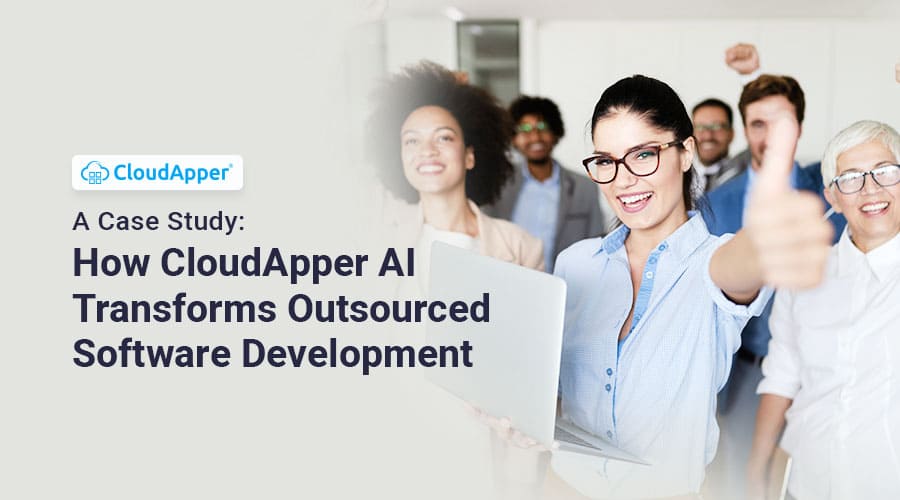20 to 25% of all outsourcing relationships fail within two years, and 50% fail within five years when it comes to outsourcing software development projects.
Table of Contents
Outsourcing software development is becoming increasingly common among businesses of all sizes, particularly in the IT sector. It is a solution adopted by businesses to address the shortage of developers in the US market by tapping into considerably larger talent pools in other nations.
However, from a strategic standpoint, learning about failed cases is equally as important as learning about success stories. According to Dun & Bradstreet’s “Barometer of Global Outsourcing” report, 20 to 25% of all outsourcing relationships fail within two years, and 50% fail within five years when it comes to outsourcing software development projects. It’s unfortunate, but it’s true. The good news is by analyzing previous organizations’ failures because of outsourcing and determining the available alternate options, you can overcome these issues. And that’s exactly what we’re going to do here.
Most Common Reasons for Failure
Even though it seems like outsourcing software development has some advantages, not all businesses that take this route are successful. In fact, a lot of managers and CEOs express frustration with the outcome for various reasons. And don’t assume this only affects startups or small businesses; outsourcing development has led to failures at major enterprises as well.
Take this case study as an example. The owner of Forever LT, an eCommerce jewelry business, had a passion for creating meaningful and timeless jewelry, but struggled with underperforming software developed by a hired team of developers. Seeking a solution, they discovered CloudApper AI. With CloudApper AI, the owner was able to easily make changes to the software without writing any code, eliminating the need to manage developers. Now, their business runs smoothly and efficiently, allowing them to focus on their true passion – creating jewelry that connects with their customers on a deeper level.
To ensure that you do not fail in your venture, it is essential to learn where other organizations have failed. The following paragraph will discuss the most common reasons that contribute to a gap while outsourcing software development.
Communication and Language Barriers
Outsourcing often involves working with teams from different countries and cultures, which can result in communication challenges. Language barriers, time zone differences, and cultural differences can lead to miscommunication, misunderstandings, and delays in project progress. Poor communication can result in misaligned expectations, missed deadlines, and subpar results, ultimately leading to project failure.
If the outsourcing arrangement lacks control and transparency, it can lead to concerns such as retaining skilled developers, poor quality of service, and communication problems.
Lack of Control and Transparency
Outsourcing software development means entrusting a third-party company with the development of critical software for your business. If there is a lack of control and transparency in the outsourcing arrangement, it can lead to issues such as poor quality deliverables, missed milestones, and lack of accountability. Without proper monitoring and oversight, a company may lose control over the development process and struggle to achieve the desired outcomes.
Intellectual Property and Security Risks
Outsourcing software development involves sharing sensitive business information, intellectual property, and access to company systems with external vendors. If proper measures are not taken to protect intellectual property and ensure data security, it can result in breaches, leaks, and legal disputes. Failing to address intellectual property and security risks can have severe consequences for a company’s reputation and financial well-being.
Efficient Software Development with CloudApper AI
Companies are looking for alternatives to outsourcing software development due to the problems and restrictions. CloudApper AI is one such solution, as it offers businesses a more safe and dependable alternative to outsourcing. Companies with complete control over the development process can eliminate the possibility of data privacy and security concerns. Furthermore, CloudApper AI manages post-development maintenance, updates, support, and upgrades, removing the need for businesses to incur additional costs or suffer hidden fees.
The platform provides businesses with an environment of regulation in which they can fully control the development process. Businesses can use CloudApper AI to develop software in an environment under their brand, allowing them to personalize their software to match their specific needs. Not only that, but CloudApper AI also provides businesses with a team of professionals that will collaborate with them to guarantee that their project fits their exact specifications and is delivered on time. This decreases the likelihood of poor-quality code, communication breakdowns, and other frequent concerns associated with software development outsourcing.
Conclusion
In conclusion, while outsourcing software development may seem to offer some benefits, it actually comes with potential pitfalls that can lead to failure if not properly managed. So, if it’s going to fail, why bother with software development outsourcing at all?
CloudApper AI, on the other hand, offers a safer and more dependable solution for businesses wishing to develop software with no risk and maximum control. Companies may focus on establishing their operations without worrying about the technical difficulties of software development since they have complete control over the development process and after-development maintenance, updates, support, and upgrades. If you’d like to learn more about CloudApper AI, please contact us today to talk with one of our specialists.
What is CloudApper AI Platform?
CloudApper AI is an advanced platform that enables organizations to integrate AI into their existing enterprise systems effortlessly, without the need for technical expertise, costly development, or upgrading the underlying infrastructure. By transforming legacy systems into AI-capable solutions, CloudApper allows companies to harness the power of Generative AI quickly and efficiently. This approach has been successfully implemented with leading systems like UKG, Workday, Oracle, Paradox, Amazon AWS Bedrock and can be applied across various industries, helping businesses enhance productivity, automate processes, and gain deeper insights without the usual complexities. With CloudApper AI, you can start experiencing the transformative benefits of AI today. Learn More

Brochure
CloudApper hrPad
Empower Frontline Employees with an AI-Powered Tablet/iPad Solution
Download Brochure
CloudApper AI Solutions for HR



- Works with








- and more.
Similar Posts

Is Outsourcing Software Development Really Cost-Effective?

Complete Guide: Hiring a Dedicated Software Development Team



